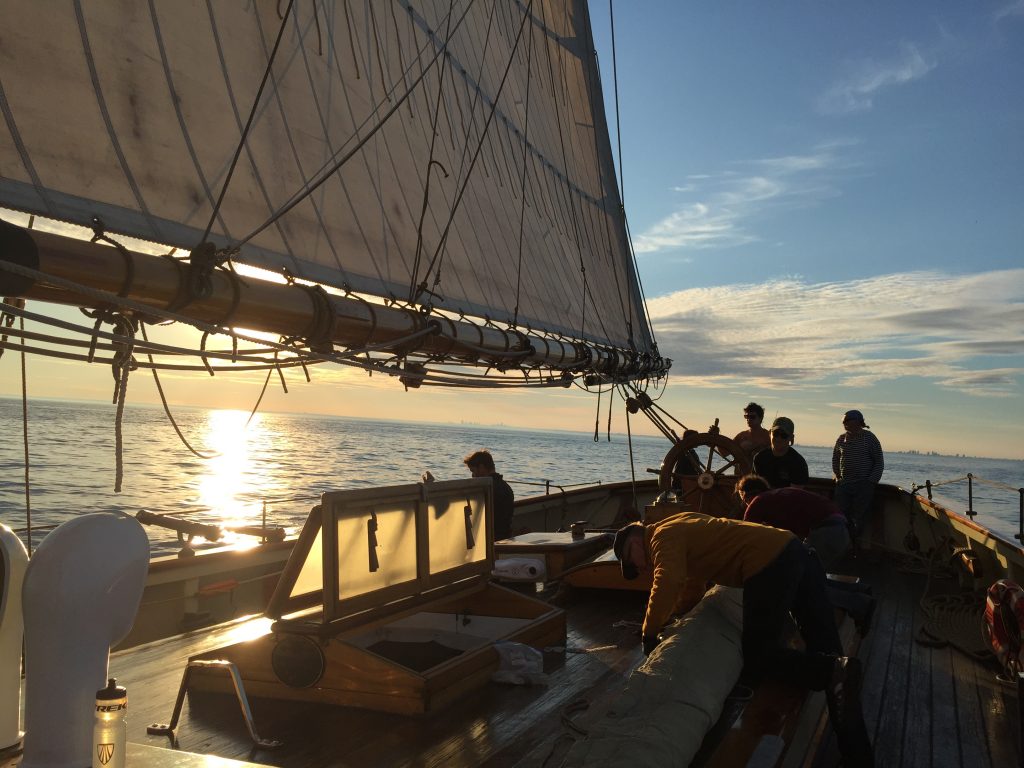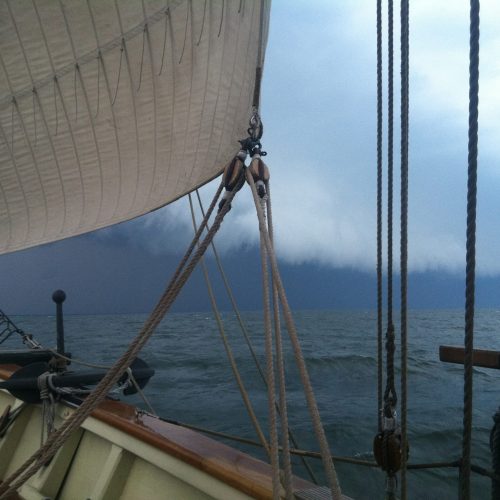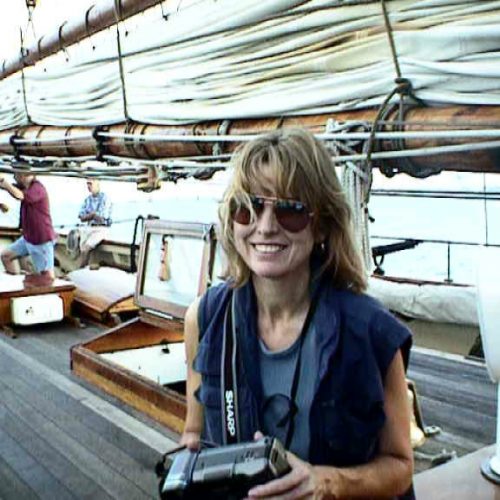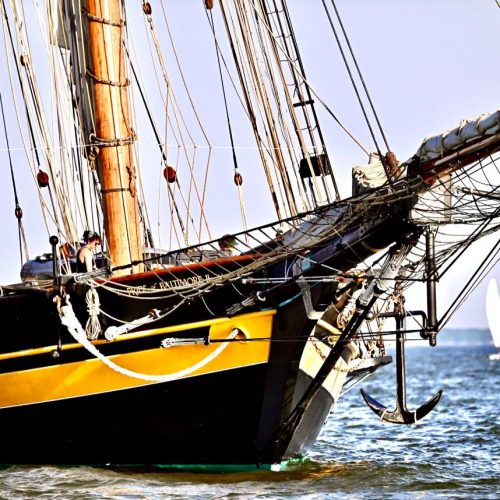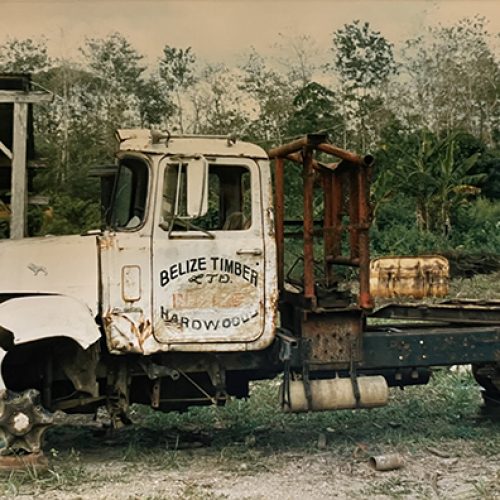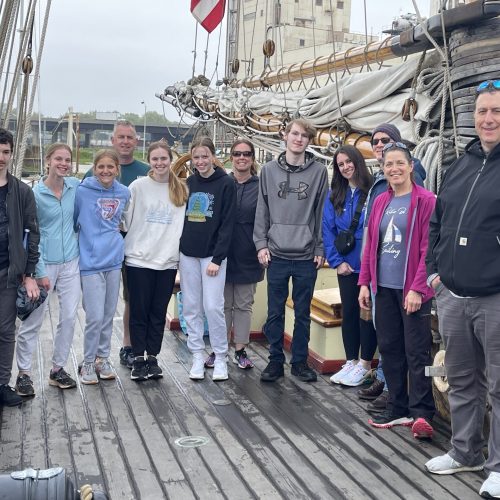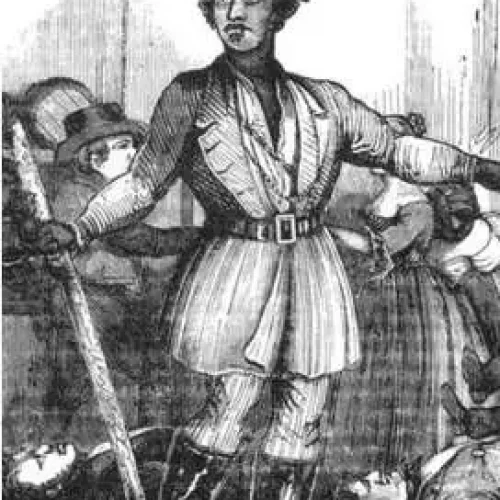Date: July 26, 2016
Position: Lake Michigan, approaching Chicago
After Tall Ship Celebration: Bay City in Bay City, MI, the ships participated in the Lake Huron Race, the third of five races in the Tall Ships Challenge race series. The course started near Tawas Point at the northern shore of the entrance to Saginaw Bay, went up halfway around the “mitten” of Michigan, to the finish line north of Bois Blanc Island. The race featured wind speeds ranging from nearly nothing to 20 knots, and featured one 180 degree windshift and another that was around 90 degrees.
The key in races like this is to make a plan and follow it – the tricky part is having a sense of when the wind is going to shift, and where, and how to position yourself so that you have not sailed excess distance to get to the right spot when the shift happens. These races are often decided by a matter of minutes, so an ill-timed tack, gybe, or even small course change can make a large difference.
The plan was for us to get north as quickly as possible, and hug the shore closely after dark. Looking at a chart of the race course, your response might well be “well- duh.” The racecourse goes north, after all, and hugging the coast means sailing less distance as you curve around the top of Michigan. The tricky part was the wind direction at the start, which was NNE, shifting steadily to the NE and then E. When sailing an upwind leg, if there is to be a persistent (only one direction, not shifting back and forth from right to left) shift like that, you have to sail in the direction it shifts; this means sailing east instead of north. Then you must pick the exact right moment to tack, so that you have neither sailed too far east and needlessly added distance, or tacked to soon, letting your competitors “inside the shift”- that is, once everyone tacks and you are all being steadily lifted, they sail the inside of the curve. Less distance, again.
Pride timed this extremely well. As a result, we were able to get inshore at night, where we were helped by another phenomenon I was counting on: the night land breeze. Land temperatures vary much more than those over water, so during the day, the hot air over land rises, creating a vacuum, and the cool air over the water rushes in to fill the gap – a “sea breeze.” At night, the opposite can happen – the land cools down, the water remains more or less the same, and so the cool air over land rushes seaward (erm, lakeward) in what is called a “land breeze” or sometimes a “drainage breeze.” This is what really made the difference in the race, for us. We were right up against the land, sometimes only a half mile or so offshore, and the land breeze, reinforced by the gradient wind direction we had earlier, built to near 20 knots. We sailed for several hours at between 9 and 10 knots, while our competitors stayed further offshore and were only doing about half that speed for a good while.
That meant that when the race got tricky again the next day, as it inevitably did, we had a substantial lead, possibly as much as 35 miles. We finished the race in light winds from astern, at about midday; the course took us about 25 hours.
We then had some time to kill, so we stopped for a day at Mackinac Island. After that, we sailed to Boyne City, Michigan, where we were hosted for a lakeside day of rest and fun (most of the fun was in playing with boats – big surprise) by the Kidd family, who have been involved with both Pride of Baltimore and Pride of Baltimore II since 1981, and who continue a long tradition of warm welcome and incredible hospitality to ship and crew.
We are now motoring down Lake Michigan in a completely flat calm, approaching Chicago.
Signed,
Captain Jordan Smith

